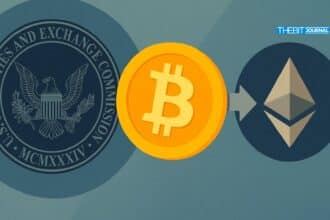US President Donald Trump’s administration has strengthened its focus on digital assets through a proposed $23B strategic Bitcoin reserve despite the ongoing bearish trend.
According to White House Digital Assets Head Bo Hines, the plan to begin the strategic Bitcoin reserve was already holding some 198,000 Bitcoins worth at least $23 billion that were mostly acquired through seizures from law enforcement actions.

A Growing Bearish Trend
The commitment to the strategic Bitcoin reserve happened at a time when BTC’s price was experiencing a bearish trend, highlighting a level of market uncertainty. At the time of writing, Bitcoin was trading at $115,162.20 with technical indicators showing a breakdown below critical support levels and a 50-day simple moving average.
Analysts predict the bearish trend was a confirmation of a potential downward momentum. Unless there is going to be an immediate recovery, analysts believe the Bitcoin price is headed to $110,000 with key support levels at between $114,532 and $112,726 or possibly $110,587.
According to crypto analytics firm Santiment, on-chain activity showed evidence of increasing institutional interest in Bitcoin. The analyst reported there was evidence whales had accumulated at least 1% of the entire Bitcoin supply during the last four months, with at least 30,000 Bitcoins bought in the previous 48 hours alone.

A Mix of Fear and Optimism
Nonetheless, despite the seeming Bullish activity, an ongoing large-scale sell-off sent an opposite message of a bearish trend. For example, a single whale offloaded 80,000 Bitcoins worth over $9 billion via Galaxy Digital, increasing pressure on market volatility. Despite the bearish trend, analysts indicate that over 97% of BTC holders remained profitable, signaling that a potential long-term bullish trend was around the corner.
Even with the commitment towards the strategic Bitcoin reserve plan, critics have called out the US government for failing to publish the details of the plan. Critics believe the silence may have led to speculation about the program’s feasibility.
However, as critics express fear that the initiative could signal political rather than a concrete financial policy, proponents argue that the revelation had a symbolic and strategic value in shaping how the US would engage with the cryptocurrency ecosystem.
For now, the strategic Bitcoin reserve initiative could become a focal point for political and financial discourse, highlighting broader uncertainties on the role of government in the cryptocurrency space and its potential implications for the global market.
Conclusion
The decision by the US administration to push on with the strategic Bitcoin reserve aligns with the broader crypto sector reforms announced by the US Securities and Exchange Commission (SEC). During a recent America First Policy Institute convention, SEC Chairman Paul Atkins revealed broad changes designed to redefine token classification and enhance regulatory clarity.
The crypto reforms aim to eliminate ambiguity for institutions and speed up crypto asset adoption to align with the Trump administration’s push towards creating a friendly regulatory environment.
Read more cryptocurrency news in The Bit Journal
Summary
- The trump administration has unveiled a $23B strategic Bitcoin Reserve with 198,000 Bitcoins received through law enforcement seizures.
- The price of Bitcoin dipped to about $115,000, with technical indicators highlighting a bearish trend.
- The ongoing reforms under SEC Chair Paul Atkins aim to redefine token classification and regulatory clarity.
- Crypto critics are questioning the feasibility of the strategic Bitcoin reserve plans while supporters believe it will reshape US crypto engagement and global dynamics.
Frequently Asked Questions
What are the potential benefits of Bitcoin strategic reserves?
As official reserves grow, the asset could experience a decrease in volatility, more institutional adoption, and greater integration into regulated financial markets, which would encourage long-term holding behavior and help stabilize the broader crypto market.
How does a bitcoin reserve work?
The reserve is a permanent reserve asset, funded by the Treasury’s forfeited bitcoin. The government won’t sell these coins and may develop taxpayer-neutral strategies for acquiring more bitcoin.
Why would the US want a bitcoin reserve?
Bitcoin is a deflationary asset; it can help protect against excessive inflation, as it has in other countries. It can also help stabilize the dollar’s value in times of stress.
Glossary to Key Terms
Bearish Trend: This is a downward trend in a particular asset. Bears think the market will go down. A market in a long-term downtrend, with continuously falling prices, is called a bear market.
Bullish Trend: A bullish market reflects optimism, with rising prices and strong demand across crypto assets.
Reference




























